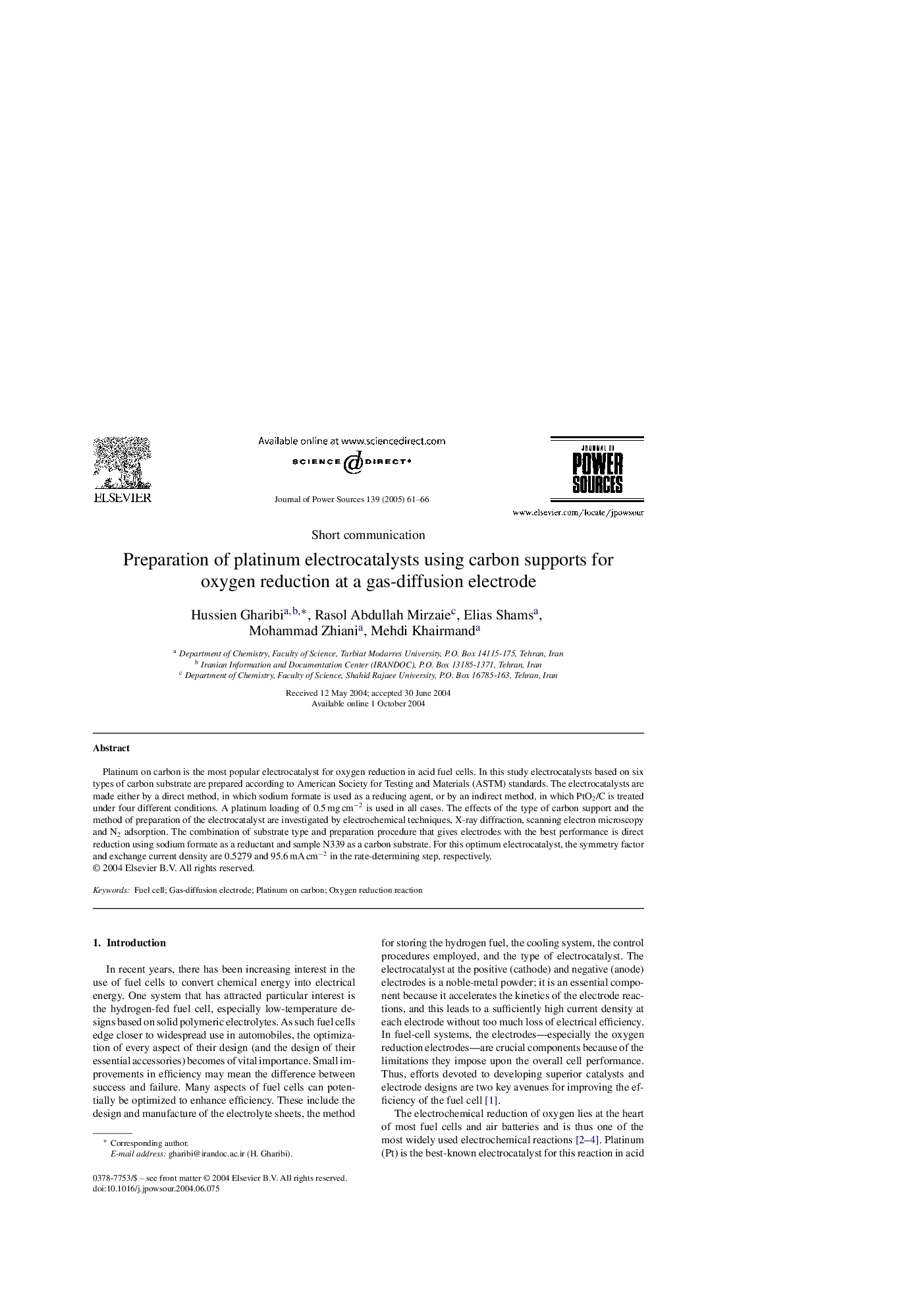| Article ID | Journal | Published Year | Pages | File Type |
|---|---|---|---|---|
| 9760499 | Journal of Power Sources | 2005 | 6 Pages |
Abstract
Platinum on carbon is the most popular electrocatalyst for oxygen reduction in acid fuel cells. In this study electrocatalysts based on six types of carbon substrate are prepared according to American Society for Testing and Materials (ASTM) standards. The electrocatalysts are made either by a direct method, in which sodium formate is used as a reducing agent, or by an indirect method, in which PtO2/C is treated under four different conditions. A platinum loading of 0.5 mg cmâ2 is used in all cases. The effects of the type of carbon support and the method of preparation of the electrocatalyst are investigated by electrochemical techniques, X-ray diffraction, scanning electron microscopy and N2 adsorption. The combination of substrate type and preparation procedure that gives electrodes with the best performance is direct reduction using sodium formate as a reductant and sample N339 as a carbon substrate. For this optimum electrocatalyst, the symmetry factor and exchange current density are 0.5279 and 95.6 mA cmâ2 in the rate-determining step, respectively.
Related Topics
Physical Sciences and Engineering
Chemistry
Electrochemistry
Authors
Hussien Gharibi, Rasol Abdullah Mirzaie, Elias Shams, Mohammad Zhiani, Mehdi Khairmand,
